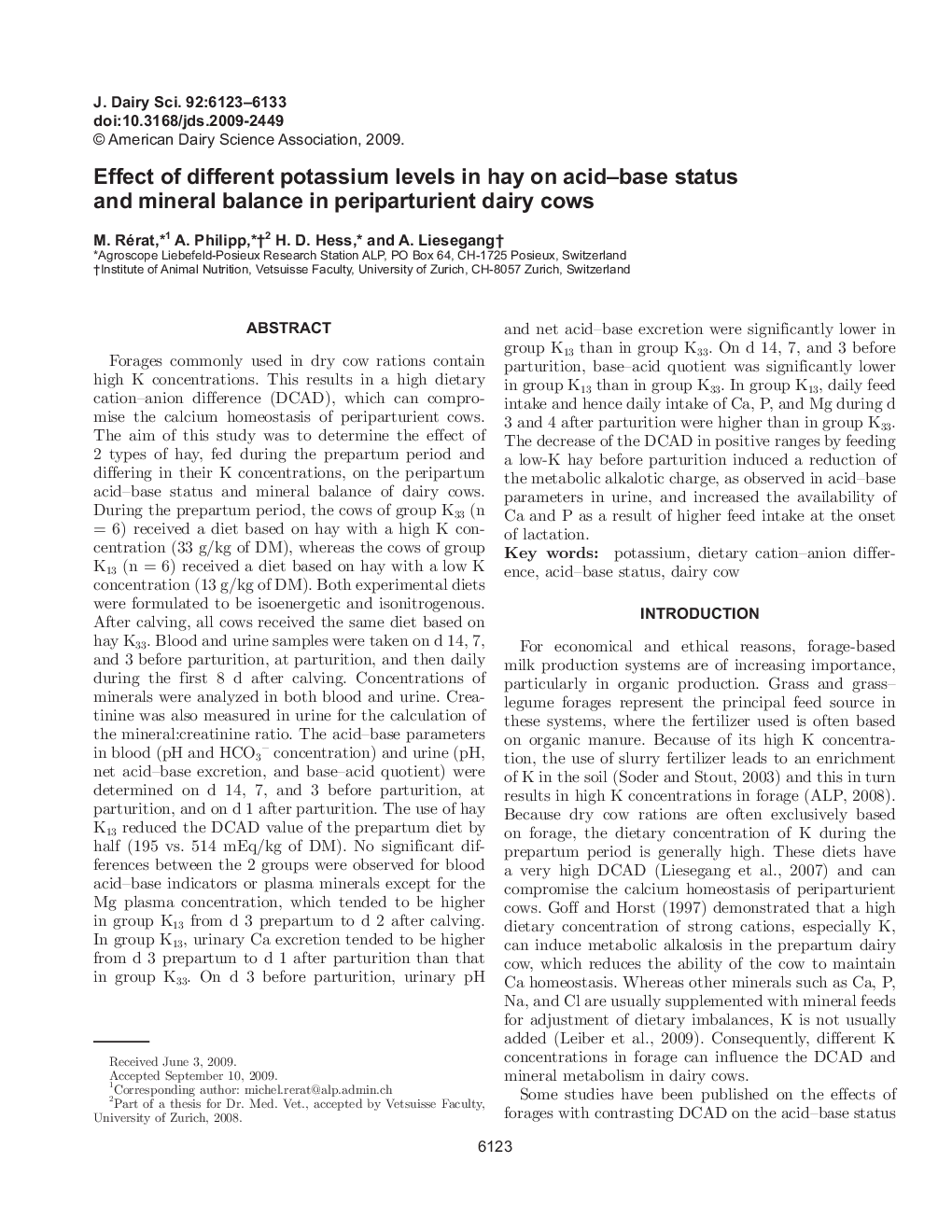| Article ID | Journal | Published Year | Pages | File Type |
|---|---|---|---|---|
| 2438954 | Journal of Dairy Science | 2009 | 11 Pages |
Abstract
Forages commonly used in dry cow rations contain high K concentrations. This results in a high dietary cation-anion difference (DCAD), which can compromise the calcium homeostasis of periparturient cows. The aim of this study was to determine the effect of 2 types of hay, fed during the prepartum period and differing in their K concentrations, on the peripartum acid-base status and mineral balance of dairy cows. During the prepartum period, the cows of group K33 (n = 6) received a diet based on hay with a high K concentration (33 g/kg of DM), whereas the cows of group K13 (n = 6) received a diet based on hay with a low K concentration (13 g/kg of DM). Both experimental diets were formulated to be isoenergetic and isonitrogenous. After calving, all cows received the same diet based on hay K33. Blood and urine samples were taken on d 14, 7, and 3 before parturition, at parturition, and then daily during the first 8 d after calving. Concentrations of minerals were analyzed in both blood and urine. Creatinine was also measured in urine for the calculation of the mineral:creatinine ratio. The acid-base parameters in blood (pH and HCO3â concentration) and urine (pH, net acid-base excretion, and base-acid quotient) were determined on d 14, 7, and 3 before parturition, at parturition, and on d 1 after parturition. The use of hay K13 reduced the DCAD value of the prepartum diet by half (195 vs. 514 mEq/kg of DM). No significant differences between the 2 groups were observed for blood acid-base indicators or plasma minerals except for the Mg plasma concentration, which tended to be higher in group K13 from d 3 prepartum to d 2 after calving. In group K13, urinary Ca excretion tended to be higher from d 3 prepartum to d 1 after parturition than that in group K33. On d 3 before parturition, urinary pH and net acid-base excretion were significantly lower in group K13 than in group K33. On d 14, 7, and 3 before parturition, base-acid quotient was significantly lower in group K13 than in group K33. In group K13, daily feed intake and hence daily intake of Ca, P, and Mg during d 3 and 4 after parturition were higher than in group K33. The decrease of the DCAD in positive ranges by feeding a low-K hay before parturition induced a reduction of the metabolic alkalotic charge, as observed in acid-base parameters in urine, and increased the availability of Ca and P as a result of higher feed intake at the onset of lactation.
Keywords
Related Topics
Life Sciences
Agricultural and Biological Sciences
Animal Science and Zoology
Authors
M. Rérat, A. Philipp, H.D. Hess, A. Liesegang,
